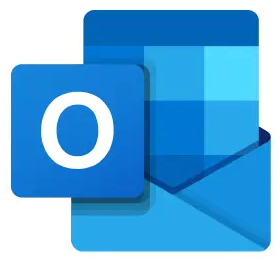From Hotmail to Outlook: A Microsoft Email Makeover

Hotmail served as a foundational web-based email service for many years, offering a dependable platform to millions of users. However, Microsoft has since integrated its email services into the Outlook brand. The strategic shift was intended to create a cohesive user experience across all platforms, blending the legacy of Hotmail with the advanced features of Outlook. Comprehending this transition can assist ex-Hotmail users in navigating the new interface, while leveraging the modern tools and security enhancements provided by Outlook.
Why Did Microsoft Transition Hotmail to Outlook?
Hotmail, which was introduced in 1996, rapidly established itself as a prominent player in the email industry. Its user-friendly interface and widespread accessibility contributed to its popularity. The email landscape underwent a transformation when Microsoft acquired it in 1997. Features like unlimited storage, enhanced spam filters, and integration with Microsoft’s suite of products were introduced. As email technology and user expectations evolved, Microsoft realized the necessity of incorporating more advanced features and enhancing security protocols.
The rebranded platform, Outlook.com, which was launched in 2012, introduced a new interface specifically designed for users focused on productivity. This change was in line with Microsoft’s approach of bringing together different services into a unified ecosystem, with a focus on compatibility with Microsoft Office products, OneDrive, and Skype. Microsoft achieved a cohesive user experience by integrating Hotmail and Outlook, with a focus on advanced features and collaboration.
Key Features of Outlook.com
- Improved Security protocols
- Security played a pivotal role during the transition, as Outlook introduced features like built-in encryption, two-factor authentication, and advanced spam filters.
- Anti-phishing technology identifies potentially harmful emails, safeguarding users against malicious content.
- We improved data privacy protocols to address user worries about data sharing and online security.
- Integrated Microsoft Ecosystem
- Outlook is designed to work seamlessly with Microsoft products, making it easier to switch between emails, calendar events, and productivity tools.
- Integration with OneDrive allows users to send and store attachments directly through the cloud, promoting efficient file management.
- Compatibility with Microsoft Teams, Skype, and Office apps enables collaboration, allowing users to share documents and hold virtual meetings with ease.
- User-Friendly Interface and Productivity Tools
- Outlook provides a clean, intuitive layout, helping users find what they need quickly.
- The Focused Inbox feature automatically prioritizes important messages, moving less essential emails to the “Other” category.
- Outlook Calendar is integrated into the interface, enabling quick access to event planning and scheduling.
Steps for Hotmail Users to Access Their Accounts via Outlook.com
- Login Process
- Former Hotmail users can log in to Outlook.com using their Hotmail credentials. There’s no need to create a new account unless users wish to.
- Simply enter your @hotmail.com email address and password on the Outlook.com login page to access the inbox.
- Migrating Settings and Data
- Microsoft ensured that user data, contacts, and emails were preserved during the transition, allowing seamless access to existing content.
- Users can adjust notification settings, inbox preferences, and privacy options through the Settings menu, making it easy to customize their experience.
- Exploring the New Interface
- Outlook’s streamlined layout may take some time for Hotmail users to get accustomed to. However, the updated design offers a more productive workflow.
- The side panel provides quick access to folders, the Calendar, and other apps within the Microsoft ecosystem.
Addressing Common Challenges: Troubleshooting and Account Recovery
Many users may face minor challenges during the transition. Here’s a quick troubleshooting guide:
- Account Recovery: If you’ve forgotten your password, Outlook offers an easy recovery process. Simply use the “Forgot password?” option and follow the prompts to reset your credentials.
- Setting Up Email Forwarding: For those with multiple email accounts, Outlook allows forwarding, helping users receive all communications in a single inbox.
- Syncing Across Devices: Outlook’s mobile app provides synchronized access to emails, calendar events, and contacts across devices, promoting seamless connectivity on the go.
Alternatives to Deleting Your Account
For users considering closing their Hotmail accounts due to the change, there are several options that may offer a compromise:
- Customizing Privacy Settings: Outlook enables users to adjust visibility, message permissions, and data-sharing preferences. This feature can improve privacy without needing to delete an account.
- Unsubscribing from Promotions: Using the Sweep feature, users can automatically delete or unsubscribe from unwanted promotional emails.
- Temporary Account Deactivation: For those wanting a break from email, consider temporarily deactivating the account rather than permanently deleting it.
FAQs About Outlook and Hotmail Transition
- Can I still use my Hotmail address? Yes, existing Hotmail addresses are still valid and work within the Outlook interface.
- How do I retrieve old emails from my Hotmail account? All emails and data from Hotmail are accessible on Outlook.com. Simply log in to view your messages.
- Do I need to create a new account? No, your Hotmail account has been fully integrated with Outlook. Logging in with your Hotmail credentials will grant you access.
Conclusion
The shift from Hotmail to Outlook represented a major advancement in Microsoft’s effort to consolidate its email services into a single robust platform. Outlook.com seamlessly blends the user-friendly experience of Hotmail’s with cutting-edge tools, robust security measures, and seamless integration with Microsoft products, making it a top choice for productivity-minded users. If you’re still using Hotmail’s, consider exploring Outlook for a range of features that can enhance your email experience while keeping the familiar functionalities intact.